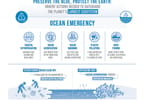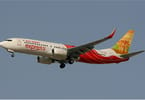AFRAA BRINGS OVER 350 DELEGATES TO RWANDA
The long-awaited 5th African Airlines Association Stakeholders Convention was launched last night at the Kigali Serena Hotel & Conference Centre with an informal get-together cocktail party, allowing old friends from across the continent’s aviation and related businesses to meet and share updates from their lives and from their profession.
Today, apart from the official opening, will business begin in earnest and after some presentations and key note addresses with panels of experts take the stage, the first one discussing how aviation stakeholders can contribute to promote growth and sustainable connectivity across Africa.
Senior staff from IATA, the host airline RwandAir, notably the Kenya Civil Aviation Authority and from regional private cargo carrier Astral Aviation will discuss and look for ways forward in the space of an hour.
Africa is amongst the fastest growing air transport markets in the world and its economic development is pulsating with an enhanced and dynamic commercial enthusiasm. The aviation industry on the continent is positioning itself for rapid growth and expansion. The economic transformation taking place all over Africa is indeed in part due to the ever growing aviation sector.
Africa is the second most populous continent with a population over 1 billion and home to an estimated one-seventh of the world’s population yet it represents just 3% of global airline traffic. The profitability of African airlines is weak, and intra-African connectivity lags behind the growth in connections from Africa to the rest of the world. Nevertheless, if it can be unlocked, one of aviation’s greatest potential markets is Africa. Aviation is the best, and sometimes the only, option for efficiently connecting this huge market. As a whole, aviation growth in continent is set to outperform the global average with seven out of the ten fastest-growing markets in percentage terms being in Africa. But this tremendous opportunity can only be seized if the restrictions on where airlines are allowed to fly are swept away. Over recent decades the understanding of the damaging effect of the lack of connectivity has been increasingly understood by African governments.
Various studies have shown evidence of wider economic benefits from greater connectivity enabled by liberalization. In Asia, India, the European Union (EU) or the U.S., the liberalization of air service has increased production and employment in many sectors such as tourism, and has supported international trade as well as global economic growth. It also has an effect of facilitating higher national productivity. Conversely, it is also evident that restrictive bilateral air services agreements between countries stifle air travel, tourism and business, and, consequently, economic growth and job creation.
A study commissioned by IATA on the benefits of liberalization on 12 African countries revealed that the additional services generated by liberalization between just these 12 key markets-Algeria, Angola, Egypt, Ethiopia, Ghana, Kenya, Namibia, Nigeria, Senegal, South Africa, Tunisia and Uganda—will provide an extra 155,000 jobs and $1.3 billion in annual GDP.
While many air markets between Africa and countries outside of Africa have been liberalized to a significant extent, most intra-African aviation markets remain largely closed, subject to restrictive bilateral agreements which limit the growth and development of air services. This has limited the potential for aviation to be an engine of growth and development
Liberalisation of African skies is long overdue and Africa has lost a huge opportunity to grow its airline industry by its lack of full implementation of the Yamoussoukro Decision (YD). The liberalisation of African skies has recently picked momentum and currently, there are 18 States that have expressed commitment to the immediate and unconditional implementation of the YD towards a single air transport market by 2017.
Over and above the slow pace of liberalisation and limited connectivity, a number of challenges abound in African aviation: air transport in the continent is still expensive, infrastructure is inadequate, taxes, fees, landing and navigation charges are high and there are nonphysical barriers exist including visa requirements that limit movement of people and goods. Addressing these challenges could significantly unlock the growth of aviation.
Stand by over the next two days to get updates from the convention which clearly aims to pave the way for African airlines to address and overcome their challenges and finally bring the industry in line with global standards and performances.
The hashtag for the event is #ASC2016
WHAT TO TAKE AWAY FROM THIS ARTICLE:
- As a whole, aviation growth in continent is set to outperform the global average with seven out of the ten fastest-growing markets in percentage terms being in Africa.
- Today, apart from the official opening, will business begin in earnest and after some presentations and key note addresses with panels of experts take the stage, the first one discussing how aviation stakeholders can contribute to promote growth and sustainable connectivity across Africa.
- The profitability of African airlines is weak, and intra-African connectivity lags behind the growth in connections from Africa to the rest of the world.






















